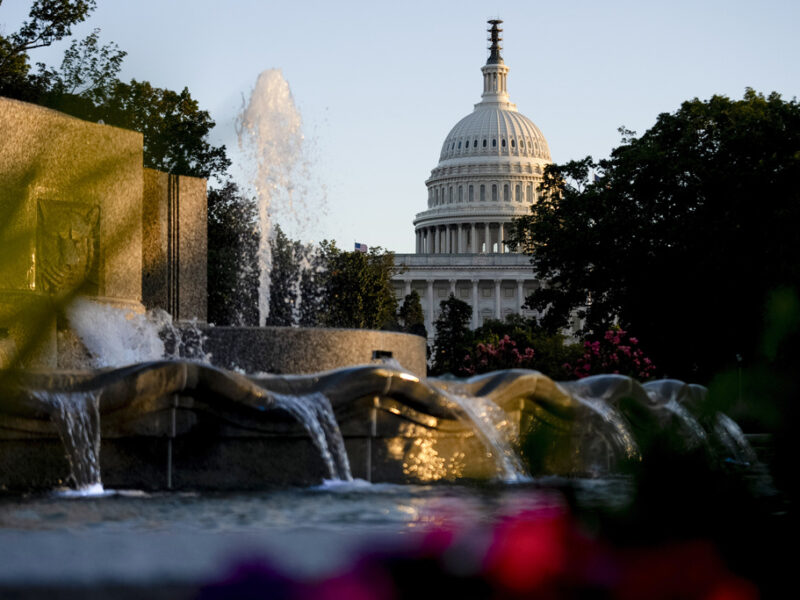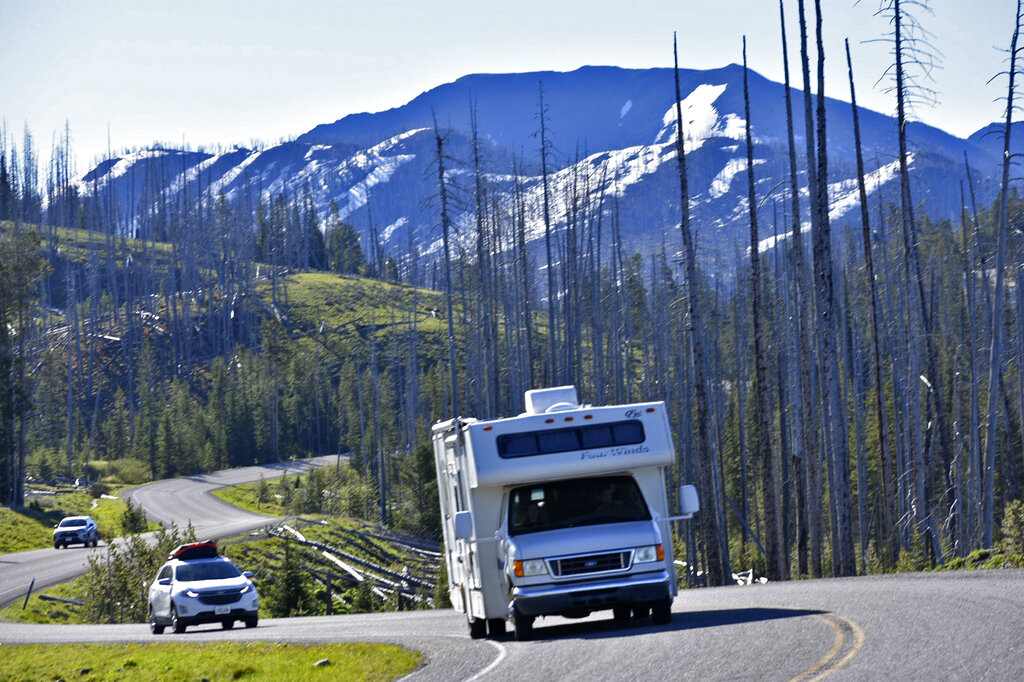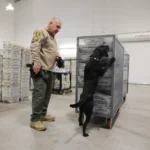SHUTDOWN SHOWDOWN: What Would a Funding Lapse Mean for You?
Wyomingites face furloughs, funding cuts and shuttered national parks
- Published In: Politics
- Last Updated: Sep 30, 2023

Barring a miracle, the government will shut down at midnight on Saturday, imperiling government assistance for thousands of Wyomingites. (AP Photo/Andrew Harnik)
By Jacob Gardenswartz
Special to the Wyoming Truth
WASHINGTON — Barring an eleventh-hour miracle, the federal government will run out of money tonight at 11:59 p.m., bringing about the 15th partial government shutdown since 1980.
In Washington, lawmakers’ spending stalemate persists. Though congressional leaders of both parties already hashed out a deal with President Joe Biden establishing government funding levels for next year, a small group of conservative House Republicans have since balked at that agreement, grinding progress on any funding bills that don’t meet their economic and policy goals to a halt.
This historic GOP infighting was exemplified by a failed House vote Friday on a short-term funding extension which would have temporarily extended funding alongside deep cuts to the social safety net. Twenty-one Republicans joined all Democrats in opposing the measure, removing House Speaker Kevin McCarthy’s only remaining instrument to avoid a shutdown — absent moving forward with the Senate’s bipartisan version of a short-term stopgap, which would extend government funding at its current levels and includes $6 billion in aid to Ukraine. McCarthy late Friday refused to do so, writing in a post on X that the bill was “misguided” and “dead on arrival.”
But as the Senate measure works its way to the floor, one thing is clear: the government is likely to soon run out of funds, at least temporarily. And though funding lapses may appear relatively common in our polarizing age, they can have wide-ranging impacts.
Modern government shutdowns are known as “partial” shutdowns because only part of the federal budget is impacted. Roughly 70% of the government’s $6 trillion annual budget is deemed “mandatory” and has already been appropriated — programs like Social Security and Medicare.
The remaining 30% is discretionary spending and must be reappropriated each year. But that doesn’t mean they aren’t crucial; discretionary spending includes salaries for government employees and military personnel, food assistance for the poor and educational programs for underserved youth, among others.

During the 35-day shutdown in 2018 and 2019, the longest in the nation’s history, U.S. GDP fell by roughly $11 billion, according to government estimates. This time around could be even worse, as lawmakers had already approved funding for some parts of the government back then, while none of the 12 federal appropriations bills have been signed into law thus far.
Here is how the shutdown could impact you:
Furloughs for federal, military and transportation workers
The federal government employs 5,762 Wyomingites, March 2023 figures from the Office of Personnel Management show. An additional 3,100 active duty troops are stationed in Wyoming, according to figures shared by the White House, along with 112 TSA agents and air traffic controllers. Many will go on unpaid furloughs as soon as the government shuts down; meanwhile, “excepted” employees, or those whose work is dubbed essential by their agencies, will continue to work without pay.
All civil servants will eventually receive back pay once a funding deal is reached, thanks to a 2019 law signed by former President Donald Trump. But they’ll go without a paycheck for the duration of the shutdown, something the White House says could “prove disruptive to our national security.”
Federal government contractors may not be so lucky; those without full-time federal jobs are not guaranteed back pay, so it’s possible they may lose their salaries altogether during the shutdown. While there’s little data on how many such contractors may be impacted, over 60 Wyoming-based businesses received federal contract funding last fiscal year, figures from the Small Business Administration (SBA) show.
National parks
Yellowstone and Grand Teton National Parks, along with Devils Tower National Monument, are all expected to close shortly after the shutdown begins. Wyoming Sens. John Barrasso and Cynthia Lummis both tried to ward off such a fate, though their efforts are unlikely to be successful.
In a statement to the Wyoming Truth, Lummis said the shutdown and subsequent park closures “jeopardizes the economic health and job stability enjoyed by surrounding communities.” Barrasso wrote a letter to Secretary of the Interior Deb Haaland earlier this month formally imploring her to keep parks open by relying on previous visitor access fees, as Trump did during the last shutdown.
Trump’s move was later determined to be illegal by the Government Accountability Office, a federal watchdog, and park officials have said the understaffed openings during that time led to significant damage, including graffiti and poaching.
On Friday, the Department of the Interior said in a statement that if the government shuts down, “the majority of national parks will be closed completely to public access… gates will be locked, visitor centers will be closed, and thousands of park rangers will be furloughed.” Barrasso, in response, blasted the Biden administration as “deliberately trying to make a government shutdown as painful as possible.”
Individual governors could keep parks open using state funds, as some have in years past. The governors of Arizona, Utah and Colorado are planning to do so this time around.
But that’s a pricey endeavor. States paid between $7,000 to $10,000 a day to keep parks open during the last shutdown, expenses for which they were never reimbursed.
Michael Pearlman, a spokesman for Gov. Mark Gordon, told the Wyoming Truth Friday that Gordon is “not inclined to spend state money to do the federal government’s work and fund National Park operations for an unknown period of time.”
Food and business assistance
Many programs that provide economic and food assistance to needy families and help to small businesses would also be impacted by a shutdown.
Funds for the Special Supplemental Nutrition Program for Women, Infants, and Children, known as WIC, will run dry “after just a few days,” the White House said. That money goes to help support the nutritional needs of low-income pregnant or breastfeeding women, infants and children up to 5 years old.
Nearly 7,500 Wyomingites were WIC recipients last year, per White House figures.
The Supplemental Nutrition Assistance Program (SNAP), more commonly known as food stamps, should continue for a couple of weeks. But if the shutdown persists into late October, the 30,000 Wyomingites who receive these benefits could see impacts to their coverage.
Other federal benefits like housing, early childhood education and federal student loan assistance could all be affected by a shutdown, too, though the exact impacts will depend on how long the funding lapse lasts.
On the business side, a shutdown would prevent the Small Business Administration from processing new loans. According to federal estimates, approximately $268,800 in financing for Wyoming small businesses would be delayed each day of a shutdown.
Medicare, Social Security and post office OK
Some key programs will not be impacted. Wyomingites who receive Medicare, Medicaid, Social Security or veterans benefits will still get them, as will those who receive funding from most Indian Health Service programs.
And don’t worry about your mail. Since the U.S. Postal Services generates most of its operating budget from shipping costs, it shouldn’t be impacted by the shutdown.













